Электронная библиотека
Essential Orthopaedics
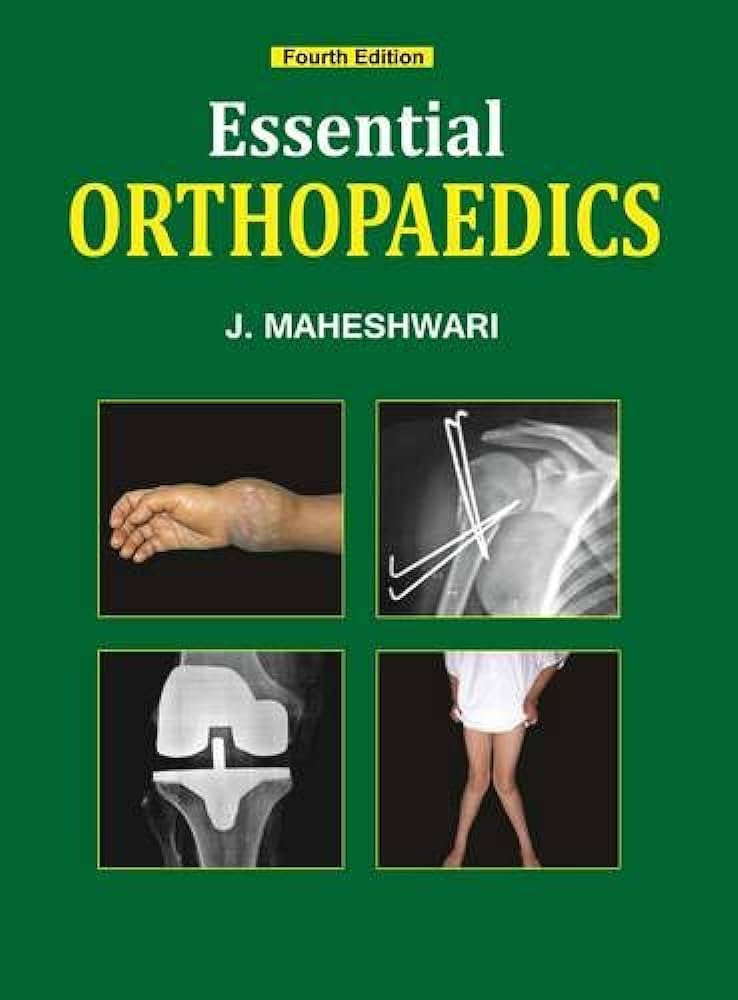
- J. Maheshwari Essential Orthopaedics: 4th Edition. – New York: Jaypee Brothers Medical Publishers (P) Ltd, 2011. – 351 p
-
Аннотация
The fourth edition of Essential Orthopaedics is a thoroughly revised, step by step guide to orthopaedics. It covers numerous different injuries and conditions, with each chapter beginning with a brief review of the relevant anatomy, followed by discussion on the principles and methods of treatment. Each condition described has a treatment plan and a summary of the key learning points at the end of each chapter. Simple line diagrams, self explanatory flow charts and tables supplement the text to help understanding. Sections on instruments and implants, as well as orthopaedic terminology are included.
Orthopedics Quick Review for NEET/DNB
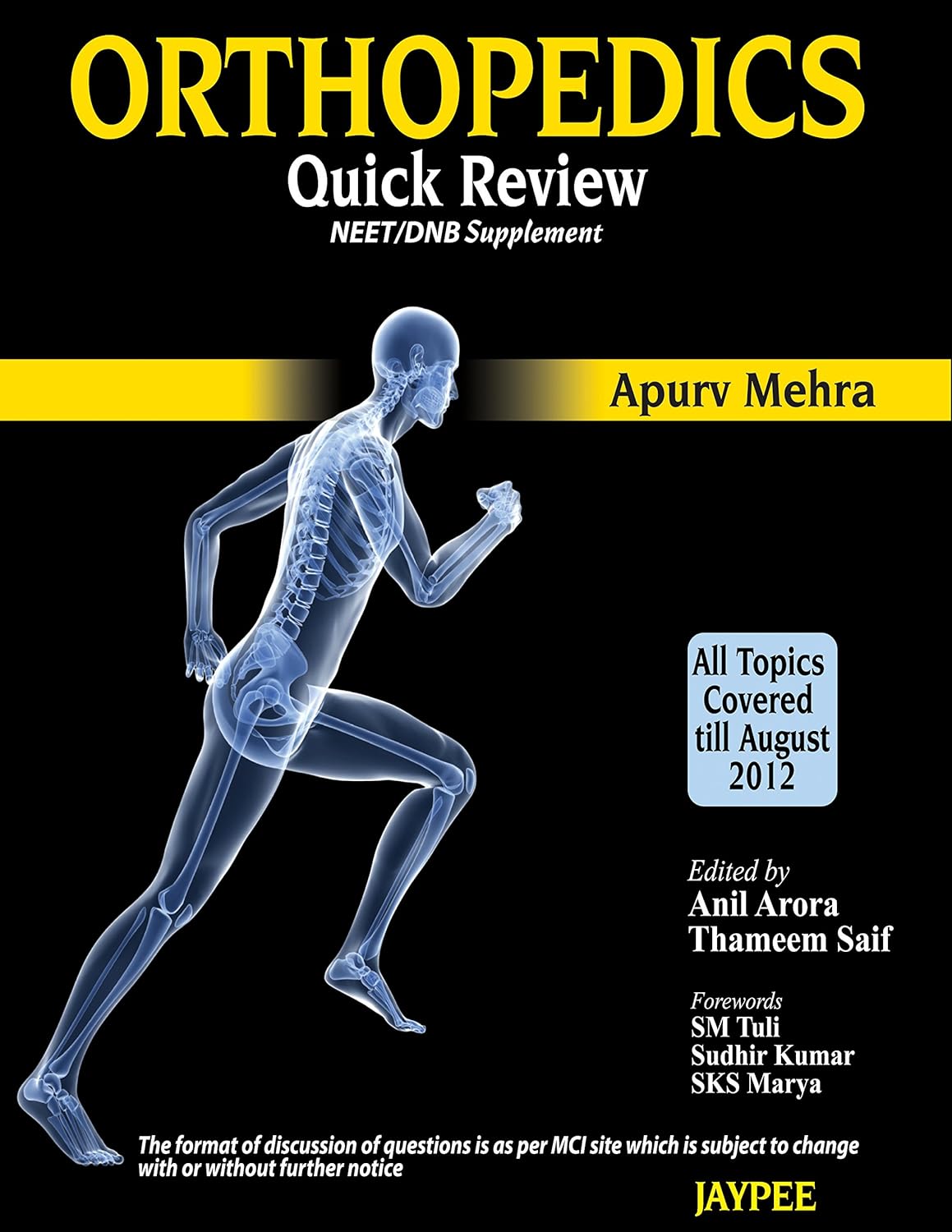
- Apurv Mehra. Orthopedics Quick Review for NEET/DNB: – New Delhi: Jaypee Brothers Medical Publishers (P) Ltd, 2013. – 155 p
-
Аннотация
This book Orthopedics Quick Review (NEET/DNB Supplement) is intended to help the student to quickly review the subject for MCQ examinations. The table of contents of the book covers the wide landscape of orthopaedic discipline. To maintain objectivity and transparency, admissions based upon objective MCQ type of questions is the best of all assessment systems, granting that no assessment system is really “perfect”. This book would help the prospective candidates to channalise their thinking process for the admission tests. The question-answer style of various sections would also help the prospective faculty (who compose the MCQs) to standardise the frame word for constructing the question with least ambiguity and for appropriate level of MBBS graduates.
Comprehensive Ophthalmology
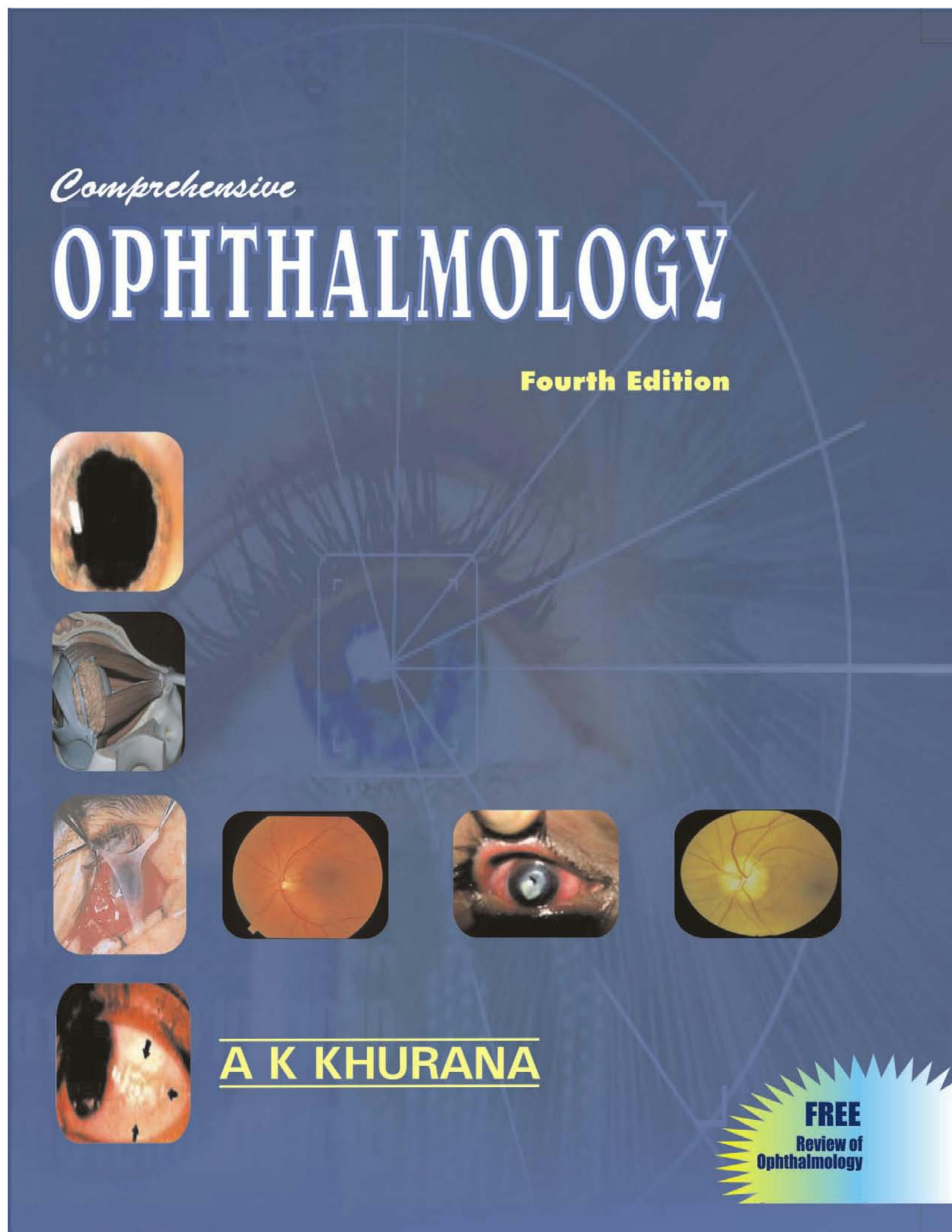
- Khurana A. K. Comprehensive Ophthalmology: 4 th Edition. – New Delhi: New Age International (P) Ltd., 2007. – 616 p
-
Аннотация
Fourth Edition Of The Book Has Been Thoroughly Revised, Updated, And Transformed Into`Comprehensive Ophthalmology`. This Will Meet The Requirements Of Medicalstudents Preparing For Their Final Theory As Well As Practical Examinations Andalso Those Preparing For Various Postgraduate Entrance Tests.Salient FeaturesThe Book Has Been Organized Into Two Sections In An Attractive Colour Format Andis Accompanied With`Review Of Ophthalmology`, As Pocket Companion.Section IAnatomy, Physiology And Diseases Of Eye Includes An Exhaustive And Thorough Exposition Of The Text.Section IiPractical Ophthalmology Provides A Complete And Exact Scheme And Pattern Of Practical Examinations Along With Ready-Made Material Conducive To Quick Comprehension.Review Of Ophthalmology, A Pocket Companion To The Book, Comprises Of Quick Text Review And Multiple Choice Questions Provides An In-Depth Revision At A Glance And An Opportunity For Self Assessment.All These Features Make This An Indispensable Text For Medical Students. Candidates Preparing For Pg Entrance Examinations Would Find It An Authentic Reference Source.
Clinical Neurology (LANGE Clinical Medicine)
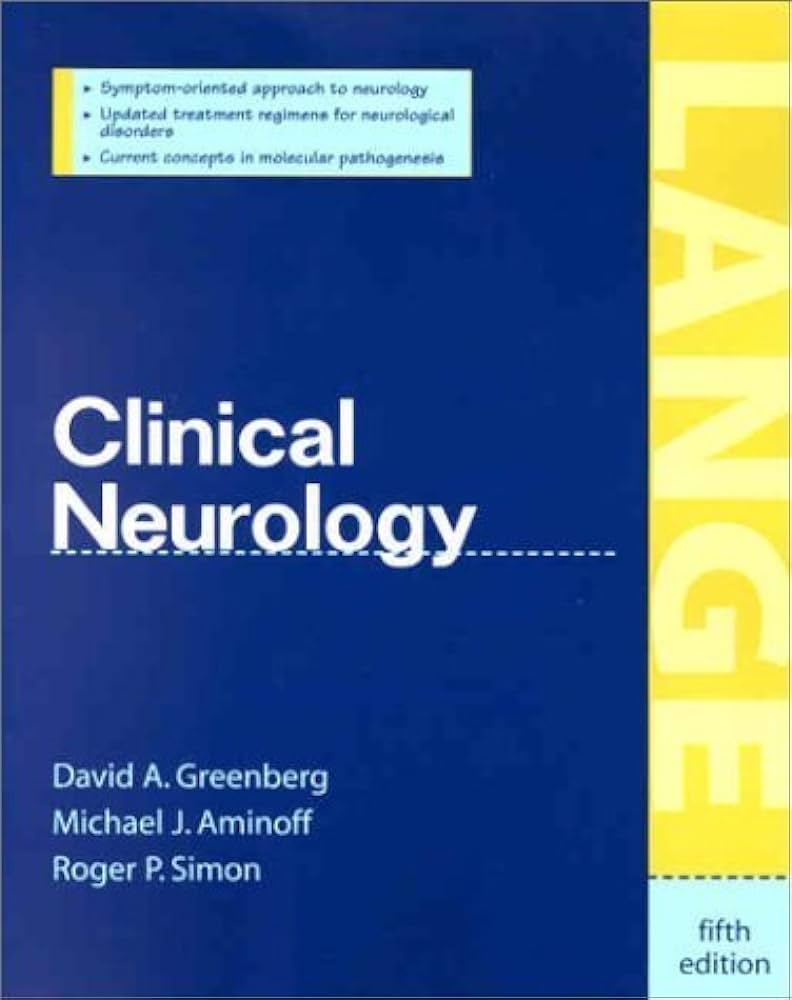
- David A. Greenberg. Clinical Neurology (LANGE Clinical Medicine): 5 th Edition. – Novato: Mcgraw-Hill Publishing Co, 2002. – 236 p
-
Аннотация
The fifth edition of Clinical Neurology, like its predecessors, offers a problem-oriented approach to neurology based on the authors' experience in teaching medical students and house staff at the University of California, San Francisco. Chapters are organized according to problems such as headache, seizures, stroke, and coma, because these are the conditions for which patients usually seek medical care. Careful history taking and neurologic examination are emphasized, as these remain the cornerstones of neurologic diagnosis, even in an era of technologic diagnostic advances. The need to update this book arises from two main sources: rapid expansion of knowledge about the molecular basis of neurologic diseases and recent innovations in the treatment of disorders such as headache, epilepsy, stroke, Parkinson's disease, and multiple sclerosis. Accordingly, increased prominence has been given to molecular mechanisms of diseases—for example, Alzheimer's disease and the polyglutamine disorders, including Huntington's disease. Sections on treatment have been updated and expanded to reflect the introduction of new therapies for neurological disorders. The summary tables of therapeutic drugs and genetic disorders inside the front and back covers, which were introduced in the last edition, have been revised to maintain currency. Key Concepts is a new feature that has been introduced in this issue. In the beginning of each chapter, some of the major concepts are presented with numbered icons. These same numbered icons appear within the text to indicate where these specific points are discussed in the chapter. We thank our colleagues, who have contributed their expert advice to the preparation of this new edition of Clinical Neurology, especially Lydia Bayne, Megan Burns, Chadwick Christine, Paul Garcia, Alisa Gean, Cheryl Jay, Catherine Lomen-Hoerth, Neil Raskin, Tom Shults, and Norman So. The staff at McGraw-Hill have been enormously helpful in moving this book through editing and production. We hope our efforts will help to demystify clinical neurology for students and practitioners and contribute to providing patients better and more focused diagnosis and treatment.
Medical Microbiology
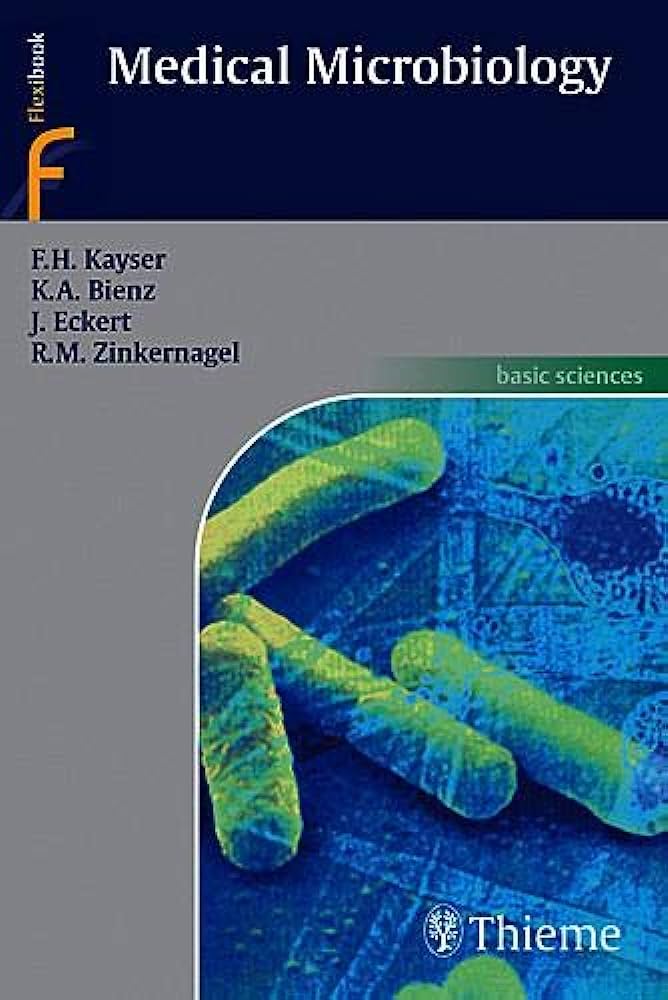
- Fritz H. Kayser, M.D. Medical Microbiology- Stuttgart, 2005. - 725 p.
-
Аннотация
While medical and hygienic developments have driven down the mortality rates of infectious diseases, pathogenic microorganisms are still a major factor in everyday clinical practice. They are still the most frequent cause of death in Third World countries. New and incurable infectious diseases are a worldwide problem. It is inescapable, therefore, that modern medicine must redouble its efforts to understand the relationship between microorganisms and humans and continue to lead the search for new therapies. The following five subject areas are covered: Immunology Bacteriology Mycology Virology Parasitology This book provides a clearly focused and richly detailed review of the entire field of medical microbiology. It is both a textbook for students of medicine and dentistry and a useful companion for medical technicians and laboratory assistants, both at school and in the laboratory. It will also serve as a handy work of reference for clinical practitioners. The book is structured with teachability in mind: The many color illustrations and microscopic images render complex themes readily accessible. Summaries at the beginning of every chapter, a color-coded reference guide and detailed diagnostic tables make this an excellent sourcebook for rapid learning and quick reference. A list of important internet addresses in the appendix will help the book's users keep abreast of cutting-edge research.
Essential Microbiology

- Stuart Hogg Essential Microbiology:– Chichester: John Wiley & Sons Ltd, 2005. – 481 p
-
Аннотация
Essential Microbiology Edition is a fully revised comprehensive introductory text aimed at students taking a first course in the subject. It provides an ideal entry into the world of microorganisms, considering all aspects of their biology (structure, metabolism, genetics), and illustrates the remarkable diversity of microbial life by devoting a chapter to each of the main taxonomic groupings. The second part of the book introduces the reader to aspects of applied microbiology, exploring the involvement of microorganisms in areas as diverse as food and drink production, genetic engineering, global recycling systems and infectious disease. Essential Microbiology explains the key points of each topic but avoids overburdening the student with unnecessary detail. Now in full colour it makes extensive use of clear line diagrams to clarify sometimes difficult concepts or mechanisms. A companion web site includes further material including MCQs, enabling the student to assess their understanding of the main concepts that have been covered.
Siegenthaler' Differential Diagnosis in Internal Medicine From Symptom to Diagnosis

- Walter Siegenthaler, MD Siegenthaler' Differential Diagnosis in Internal Medicine From Symptom to Diagnosis- Stuttgart, 2007.- 1143 p.
-
Аннотация
This book encompasses differential diagnosis across the spectrum of internal medicine, covering dermatology, neurology, and rheumatology, and provides the very latest knowledge including pathophysiological aspects. In contrast to encyclopedically structured textbooks, this book traces the path from symptom to diagnosis, just as the physician encounters the situation in the hospital and in the office. With this pragmatic approach—starting from the symptom(s)—the physician will usually succeed in substantiating the suspected diagnosis. Using this method, Siegenthaler’s Differential Diagnosis in Internal Medicine guides the reader through the differential diagnostic challenges in the entire field of internal medicine, including dermatology, neurology, and rheumatology. The book incorporates many relevant and instructive illustrations, tables, graphics, and algorithms, all contributing to the process of narrowing down a definitive diagnosis.
Textbook of Family Medicine

- Robert E. Rakel. Textbook of Family Medicine: 9th Edition – Philadelphia: Elsevier, 2016. – 1447 p
-
Аннотация
This ninth edition of the Textbook of Family Medicine, edited by Drs. Robert E. Rakel and David P. Rakel, remains your #1 choice for complete guidance on the principles of family medicine, primary care in the community, and all aspects of clinical practice. Ideal for both residents and practicing physicians, this medical reference book includes evidence-based, practical information to optimize patient care and prepare you for the ABFM exam. A clean, quick-reference layout makes it easy for you to put information to work immediately in your practice.
The Language of Medicine
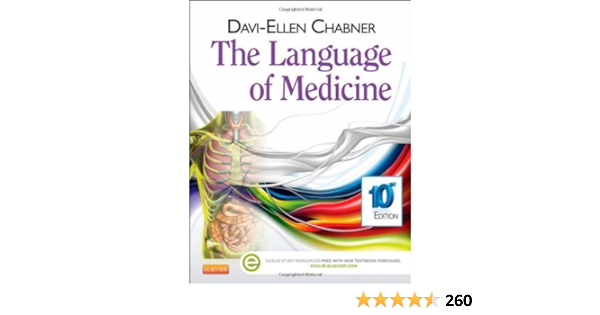
- Davi-Ellen Chabner BA MAT. The Language of Medicine: 10th Edition – St. Louis: Elsevier Inc., 2014. – 1076 p
-
Аннотация
Bring medical terminology to life with Davi-Ellen Chabner's bestselling The Language of Medicine, 10th Edition By presenting medical terms within the context of the body's anatomy and physiology, and in health and disease, this proven resource makes it easy to learn a working medical vocabulary built on the most frequently encountered prefixes, suffixes, and combining forms. Practical exercises and case studies demonstrate how medical terms are used in practice. Add an engaging student Evolve website with medical animations and videos, word games, flash cards, and more, and you'll be ready to communicate confidently in the clinical setting and succeed in your healthcare career.
Davidson’s Principles and Practice of Medicine. Any screen. Any time. Any where
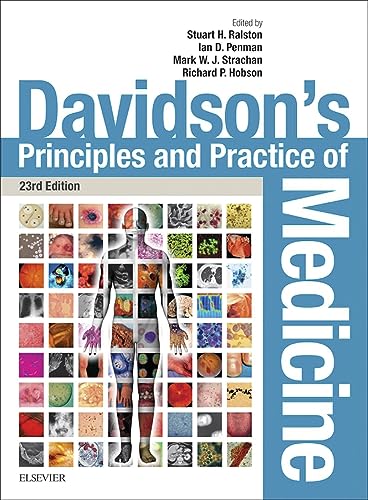
- Stuart H. Ralston Davidson’s Principles and Practice of Medicine. Any screen. Any time. Any where.: 23rd Edition – Edinburgh: Elsevier, Inc., 2018. – 1440 p
-
Аннотация
This text on clinical medicine has been updated to aid learning and revision. Topics covered include genetic, climatic and environmental factors in disease, and endocrine and metabolic diseases, whilst a new chapter on geriatric medicine has also been included.
